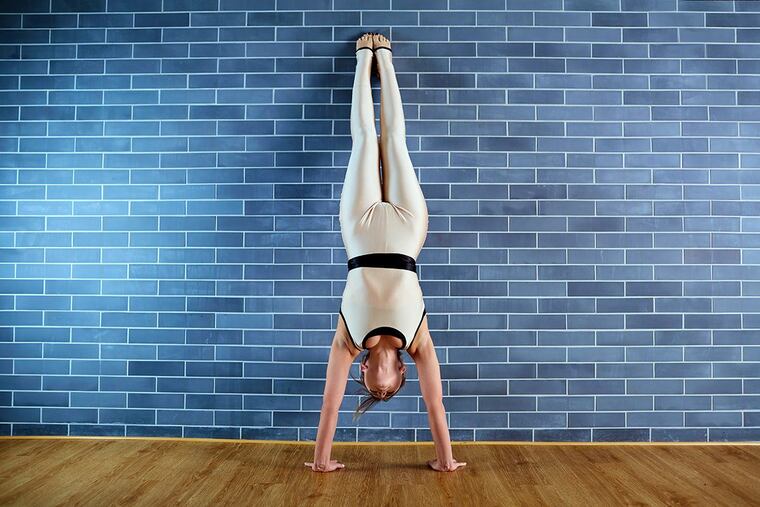3 tips to help you practice your handstand
I'll help you avoid some of the most common pitfalls I see in beginner handstand practitioners, and share some simple strategies to stay safe in all inversion poses.

Are you ready to take your yoga practice to the next level? Today we'll look at how to create a safe handstand practice over time. I'll also help you avoid some of the most common pitfalls I see in beginner handstand practitioners, and share some simple strategies to stay safe in all inversion poses.
Foundation, Foundation, Foundation.
In real estate, "location, location, location" is the most important factor. When it comes to handstands, that saying translates to 'foundation, foundation, foundation.'
In this position, your entire bodyweight is balanced on just your palms, so the placement and action of your hands is paramount. To set yourself up for success, build your foundation as follows:
Place your hands shoulder-width distance,
Keep the biggest wrist crease parallel to front of yoga mat
Spread your fingers evenly, with each fingertip heavy
Press evenly through your palm's perimeter, especially at the index finger base
In handstand (and all weight bearing positions on the palms), your weight should be forward in the palm and the fingertips, with a lightness through the center heel of the hand.
You'll build skill and strength in your hands through attentive practice over time. I suggest practicing this clear foundation in the hands throughout a series of progressively challenging poses.
For example, start in a simple table top position on your hands and knees. Feel the change in your forearm and shoulder muscles as you line the hands up parallel and shoulder width, wrist creases parallel to the front of your mat. Spread each finger down and forward, and keep them weighty as you press the circumference of your palm down, especially heavy at the root of your forefinger.
Next, work the hands as above in down dog. You can play with transitions from down dog through plank, then back to down dog, without anything changing in your hands.
As you feel more confident in maintaining clear action in your hands during those transitions, start working on an L-pose at the wall like in this video. If you are new to inversions, L-pose is a great place to get comfortable with the feeling of your hips stacking over the foundation in your hands. Focus on keeping your hands steady as you move your pelvis over your foundation.
Eyes on the Prize
Your gaze in handstand should always be focused on a point between your hands. (It's true that advanced handstanders might over time shift the gaze to a point out in front of them, that's an advanced variation, beyond what we're exploring today).
A common misstep here is to look too far forward, as if peering beyond your fingertips. This will crane your neck, creating an accordion action up through the entire pose. Try keeping your ears more in line with your biceps, not in front of them.
Kicking Up
Now that you've got your foundation and gaze properly tuned, you're ready to kick up.
Below (and in this video) are the common mistakes when kicking up to handstand, and how to rise above them.
Misalignments in the hands. Be sure to keep your hands flat as you kick up.
Gaze shifts. The head will often drop and the eyes will lose their focus during this movement. Keep your eyes steady as you kick up.
Arms not stacked. It will be easiest to kick up when your arms are stacked vertically over the foundation. Avoid trying to kick up from down dog, where the shoulders are angled back from the wrists.
Launch leg not powerful. The foot on the ground when you're kicking up is your launch leg, and it has to act like a spring to push you up.
Moving from the periphery. When kicking up, you want your pelvis to move over your foundation. If the kick leads with the foot and the pelvis trails, it may rebound right back down.
Justicia DeClue (E-RYT 500) is the owner and director of Maha Yoga in Philadelphia. She has been teaching since 2005 and is most sought after for her detailed alignment instruction.